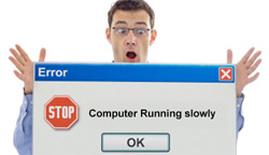
When Windows 7 or Windows Vista programs won’t run right, there are some things you can do to get them working. Programs that won’t load quickly, don’t function correctly, freeze, won’t show up on your desktop or don’t install properly can all be fixed.
Here are some tips on how to troubleshoot Windows software problems.
When everything else fails, you have two more options.
Following these steps should get any piece of software up and running. Software can be finicky, and so can many computer systems. Every problem, however, has a solution.
Here are some tips on how to troubleshoot Windows software problems.
- Obviously, first make sure the program you have installed is compatible with Windows 7, Windows Vista or whatever version you are running.
- Second, make sure your computer meets the software’s minimum system requirements. You will need to upgrade your equipment to run software that exceeds your system’s capacity. Computers that barely comply with minimum requirements may perform unreliably or slowly when their capacity is being maxed out.
- Some software works better when few other programs are running, so close windows and programs you aren’t using. Try the program in question again after you close everything else.
- Make sure at least 5 to 10 percent of your total hard drive space is free to get the best performance from your Windows 7 or Windows Vista machine. This makes programs run faster and prevents annoying crashes. Use a disk cleanup utility to free some space if you’re running short.
- Visit your software maker’s website for updates and notes about frequent issues. If it’s a Microsoft program, run Windows Update and let it load all patches. Once you’ve installed all available updates for your system, restart the computer before you try your software again.
- Improve your system’s overall performance by deleting or uninstalling any unwanted programs. Windows 7 and Windows Vista work best when they’re not cluttered, so this may improve your software’s performance.
- Check your Startup folder and disable any Windows 7 or Windows Vista programs that load automatically when you start the computer. Once again, restart after making these changes.
- Next, further improve the performance of your machine by running its defragmenting utility to optimize your hard drive.
- If your new software still isn’t working correctly, scan for spyware and viruses. Both Windows 7 and Windows Vista can use Windows Defender, which can help eliminate threats and reduce pop-ups that claim system resources.
When everything else fails, you have two more options.
- After uninstalling the software and rebooting the computer, try loading the program again. Something may have gone wrong the first time.
- Finally, go for help from either Microsoft or the software company’s technical support, but be aware that these services may charge a fee. They may also be able to help you finally solve your problem.
Following these steps should get any piece of software up and running. Software can be finicky, and so can many computer systems. Every problem, however, has a solution.


 RSS Feed
RSS Feed